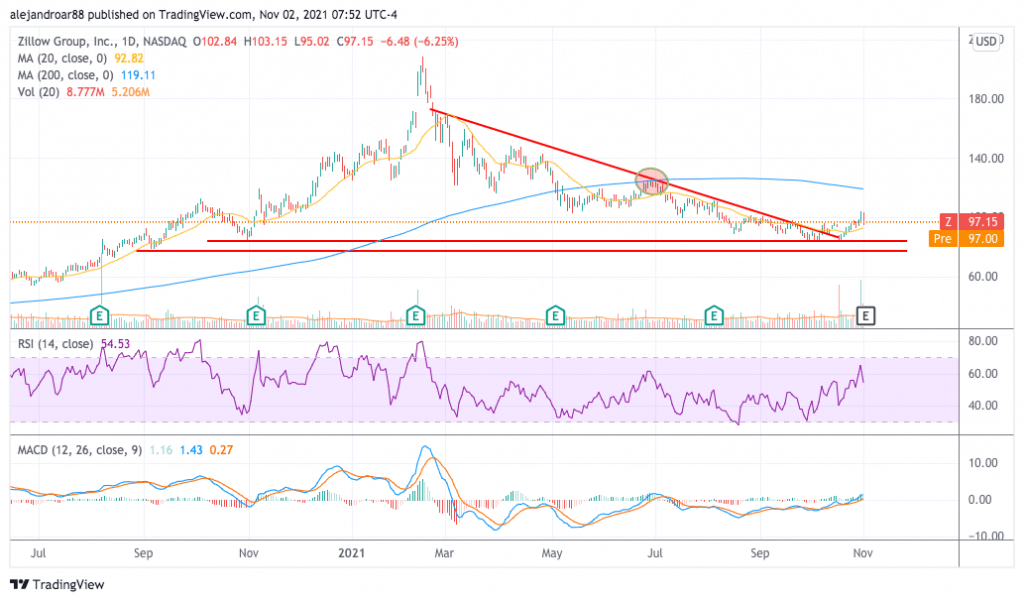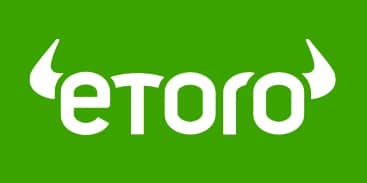Zillow Stock Down 6% in November – Time to Buy Z Stock?
Please note that we are not authorised to provide any investment advice. The content on this page is for information purposes only.
The price of Zillow stock was down over 6% during the first stock trading session of November following news that the company is seeking to sell around 7,000 homes it bought as part of its property-flipping operation.
This would be nearly 3.5 times the number of properties sold in the previous quarter and possibly the highest figure reported in a single quarter since the company launched this initiative.
The transaction would involve the disposal of around $2.8 billion worth of properties only a month after the company announced that it was halting new purchases amid “a backlog in renovations and operational capacity constraints”.
Meanwhile, according to an investigation from Business Insider, many of the properties that Zillow has acquired in markets including Atlanta, Phoenix, and Houston are being listed by the company below their purchase price.
The report further highlighted that the company may report above-expected operating losses in this particular revenue segment but investors appear to have shrugged most of those concerns as the stock price went on to advance nearly 18% in October despite the news.
Zillow is expected to report its financial results covering the third quarter of 2021 later today and volatility will probably be at the order of the day considering the uncertainty surrounding the performance of the business during this quarter.
In this article, I’ll attempt to outline plausible scenarios for the stock price ahead of the release of this report.
68% of all retail investor accounts lose money when trading CFDs with this provider.
Zillow Stock – Technical Analysis

Yesterday’s sharp single-day decline dangerously pushed Zillow stock to tag its short-term moving averages ahead of the release of this earnings report and at a point when a golden cross was about to pop.
Golden crosses are typically considered bullish setups unless the price drops below the moving averages involved. Yesterday’s downtick was preceded by a strong 5% uptick on 29 October on a session that featured above-average trading volumes.
Meanwhile, yesterday’s volume also exceeded the 10-day average by 1.5 times and that emphasizes how volatile this post-earnings period may be for the stock.
Momentum oscillators are pointing to a bullish outlook for Zillow as the MACD has climbed to positive territory on the back of steadily rising positive histogram readings while the Relative Strength Index (RSI) is on an uptrend since the bullish divergence we highlighted in a previous article about Zillow stock played out in its favor.
Based on the price of the shortest-dated options contracts for Zillow, the market is expecting a 10% move in the stock price following the release of these quarterly results. Even if that 10% decline is realized, the stock would still have two major supports that could serve as a landing pad in case market participants are disappointed by the report. These support areas stand at $85 and $78 per share.
Meanwhile, if the price jumps following the release of the report, the outlook for Zillow stock would turn bullish with a near-term target set at $119 per share – the stock’s 200-day moving average.
Zillow Stock – Fundamental Analysis
Zillow’s sales have been advancing in the past few years amid the positive accounting impact that the property-flipping operation has on its top-line results as the company can book the sale of these homes as revenue.
For the three months ended on 30 September, the company forecasted revenues of around $1.9 and $2 billion and adjusted EBITDA ranging from $94 to $126 million primarily amid the positive contribution of the IMT segment.
The Homes segment, the one that recollects the results of Zillow’s flipping operation, is expected to report total revenues between $1.4 and $1.5 billion and negative adjusted EBITDA of around $50 and $65 million.
Since this segment has been having the most influence on the price of Zillow stock, its performance relative to analysts’ expectations may have a sizable impact on the volatility that the share price may experience once the report is out.
In this regard, above-expected negative adjusted EBITDA or downbeat comments from the management in regards to the feasibility of these operations may result in a sharp correction in the value of Zillow stock.
Meanwhile, at its current enterprise value of $22.3 billion, Zillow is trading at nearly 31 times its adjusted EBITDA for the entire year if one uses a simple run-rate of the results posted by the firm during the first semester. This ratio is particularly higher than the average of 9.4x for companies within the same sector.






